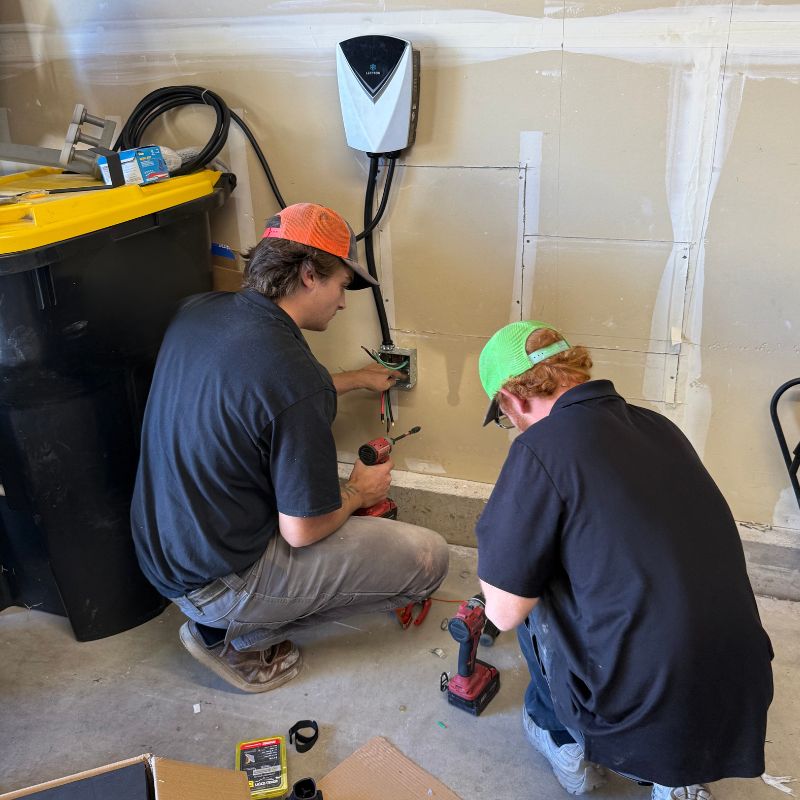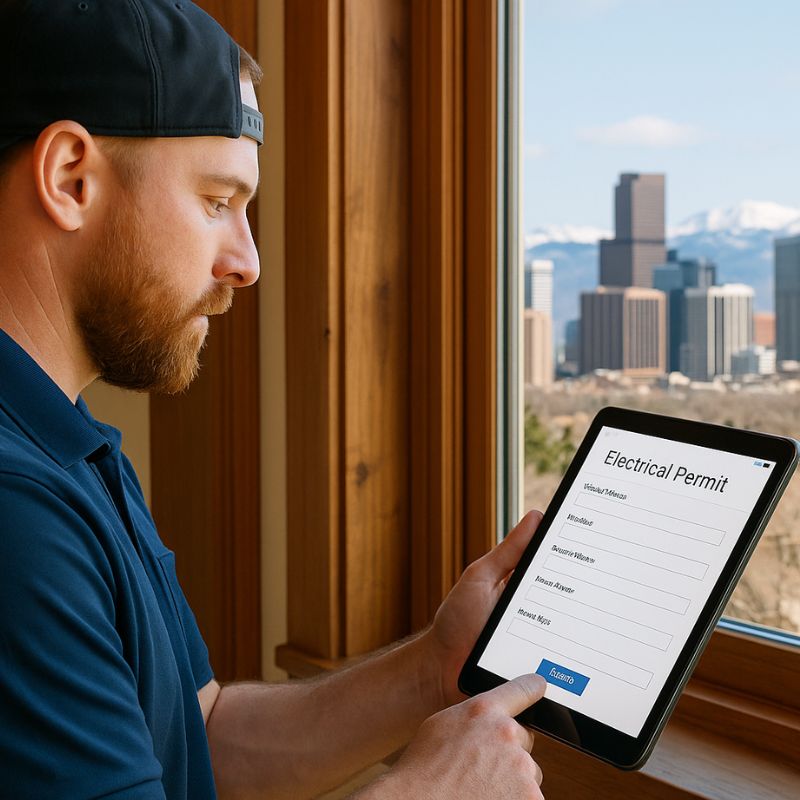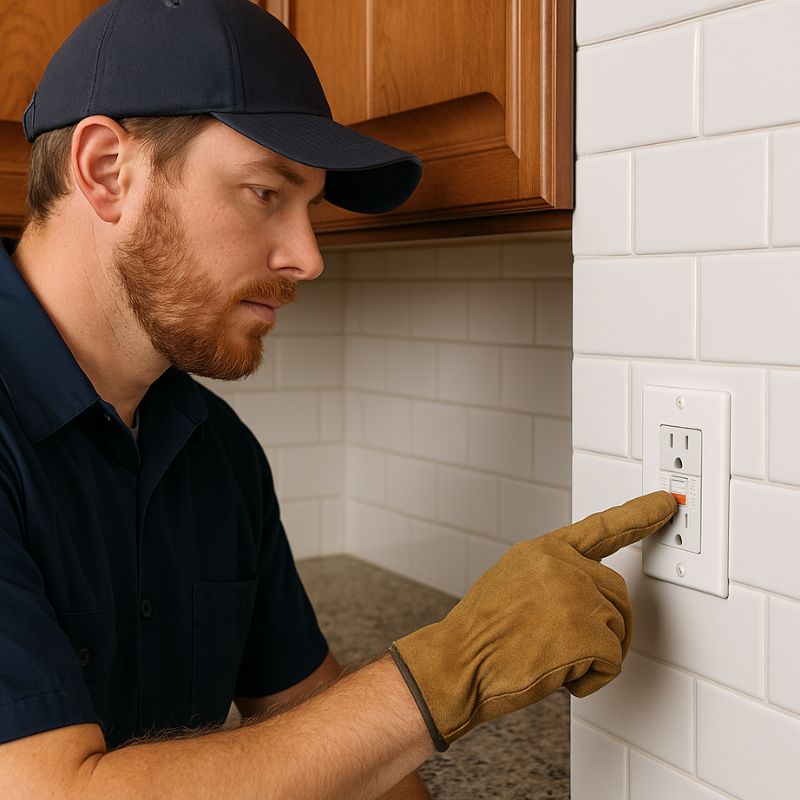Contents
- How to Tell What Appliances Are Using the Most Electricity
- The Biggest Electricity Users in Your Home
- Are Appliances Using Power Even When Turned Off?
- How to Measure Energy Use by Appliance
- Faulty Wiring Can Raise Your Electric Bill
- Smart Tips to Reduce Electricity Use
- Frequently Asked Questions
- Start Saving Energy and Money Today
How to Tell What Appliances Are Using the Most Electricity
A Practical Guide to Lowering Your Electricity Costs at Home

If your electric bill seems unusually high and you’re not running the AC 24/7 or hosting late-night baking marathons, you might be wondering what’s causing it. The truth is, some of the biggest energy drains in your home are everyday household appliances that run quietly in the background.
Understanding how much electricity your appliances use is key to making smarter choices that help you save money, lower your electricity costs, and reduce waste.
Whether you’re concerned about your environmental impact or just want to keep more cash in your wallet, this guide will help you take control of your energy usage.
The Biggest Electricity Users in Your Home
Every household is different, but certain home appliances tend to use the most electricity regardless of where you live. Here are the top offenders to watch out for:
1. Electric Furnace or Boiler
During colder months in the United States, electric heating systems consume a large portion of your energy use. In some homes, heating can account for nearly half of the monthly electricity bill.
2. Central Air Conditioners
In the summer, central air conditioners work hard to cool your home. Older units or improperly maintained systems can use far more power than necessary.
3. Electric Water Heater
If you rely on an electric water heater, it runs constantly to supply hot water for showers, laundry, and dishes. This is one of the top sources of energy consumption in most homes.

4. Refrigerator
Your fridge never takes a break. And if it’s an older model or a second fridge in the garage, it may be costing you more than you think. Look for an energy efficient model to cut down on unnecessary usage.
5. Clothes Dryer
Dryers, especially electric ones, are heavy energy users. Even a typical energy efficient model still uses between 2 to 4 kilowatt-hours per load.
6. Electric Oven and Stove
Cooking meals at home adds up. Using the oven for long periods or cooking on multiple burners can make your electricity usage spike, especially during holidays or big family gatherings.
7. Lighting
Traditional bulbs waste a lot of energy. If you’re still using incandescent or halogen bulbs, switching to LED can make a significant difference in both cost and consumption.
8. Dishwasher
Modern dishwashers are more efficient, but the built-in heating elements used to dry dishes still pull significant energy. Running full loads and turning off the heated dry feature can help.
9. Television and Home Entertainment Systems
Modern flat-screen TVs, streaming devices, and sound systems often stay in standby mode, drawing power even when not in use. Over time, this passive consumption adds up.
10. Microwave
While it only runs in short bursts, frequent daily use of a microwave can still contribute to your overall energy consumption, particularly in larger households.
Are Appliances Using Power Even When Turned Off?
Yes, and these are known as energy vampires. Devices like TVs, microwaves, cable boxes, routers, and even kitchen appliances with clocks or sensors often continue to draw power after they are turned off.

According to the U.S. Department of Energy, as much as 10 percent of a typical home’s electricity is used by devices that are not actively in use. That standby light on your TV or digital clock on your coffee maker is powered around the clock.
Tip to Save Money: Unplug devices when they are not in use or use a smart power strip that automatically cuts power to idle devices.
How to Measure Energy Use by Appliance
1. Plug-in Energy Monitors
These devices go between your appliance and the wall outlet. They measure exactly how much electricity is being used in kilowatt-hours. This is great for smaller household appliances like TVs, coffee makers, and toasters.
2. Whole-Home Energy Monitors
Systems like Sense or Emporia are installed on your main electrical panel. They monitor your entire home’s usage and help you identify which appliances use the most electricity. You can even track everything from a phone app.
Want to learn more about smart monitoring? Contact us for professional installation and advice on whole-home energy monitors.
Faulty Wiring Can Raise Your Electric Bill
Sometimes your appliances are not the problem, your wiring is. Poor or outdated wiring can create resistance, causing your appliances to pull more energy than necessary. This not only drives up your bill but also creates a fire hazard.
Common signs of bad wiring include:
- Flickering lights
- Warm or discolored outlets
- Frequently tripped circuit breakers
- A burning smell near outlets or panels
In particular, older homes in Colorado may still have outdated electrical panels like Federal Pacific or Zinsco. These panels are known for safety issues, including a higher risk of electrical fires, and they may not properly regulate power.
They can also cause appliances to draw inconsistent or excessive amounts of electricity, leading to higher bills and long-term damage. If your home has one of these panels, it’s a good idea to have it inspected or replaced.
If any of these sound familiar, schedule a home electrical inspection to ensure your wiring is safe and up to code.
Smart Tips to Reduce Electricity Use
✅ Upgrade to Energy Efficient Models
When replacing major home appliances, look for the ENERGY STAR label. These models are designed to use less electricity while performing at a high level.
✅ Change Your Usage Habits
- Wash clothes in cold water
- Only run the dishwasher when full
- Use smaller appliances like toaster ovens when possible
- Turn off lights when leaving a room
- Set your thermostat wisely in both summer and winter
✅ Use Smart Plugs and Timers
These allow you to control when appliances draw power, making it easier to cut off unnecessary usage during the night or work hours.

✅ Install a Smart Electrical Panel
Smart panels help you monitor real-time energy usage and even automate power-saving during high-demand hours.
Frequently Asked Questions
Do household appliances use electricity even when turned off?
Yes, many appliances still draw electricity in standby mode. Unplug them or use smart outlets to eliminate waste.
What appliances use the most electricity in a typical home?
The biggest users are heating and cooling systems, water heaters, clothes dryers, and refrigerators.
Can I measure my appliance’s energy use without special tools?
You can estimate usage by checking appliance labels for wattage, but plug-in monitors and whole-home systems are more accurate.
Can bad wiring really increase electricity costs?
Yes, poor connections and aging wires force your appliances to work harder, using more electricity and posing safety risks.
Start Saving Energy and Money Today
Knowing which appliances use the most electricity empowers you to make smarter choices. Whether you’re looking to upgrade to an energy efficient model, cut back on electricity costs, or fix outdated wiring, every step adds up.
Let the licensed professionals at The Electricians help you create a safer, smarter, and more efficient home.
From electrical services to electrical repair, we’re here for homeowners across Colorado.
Ready to take control of your electricity bill? Schedule a service today.
Related Posts
If you enjoyed reading this, then please explore our other articles below:








